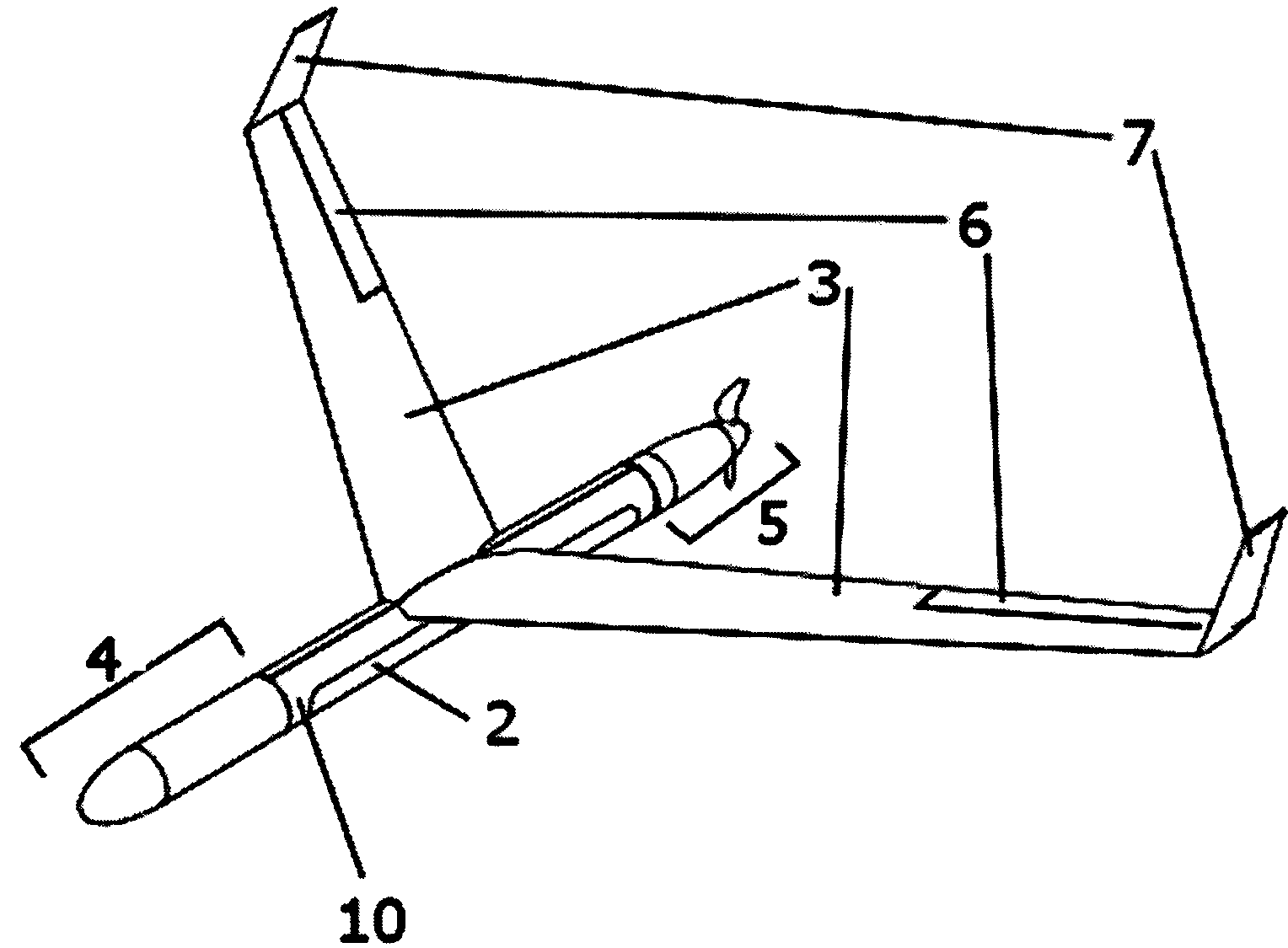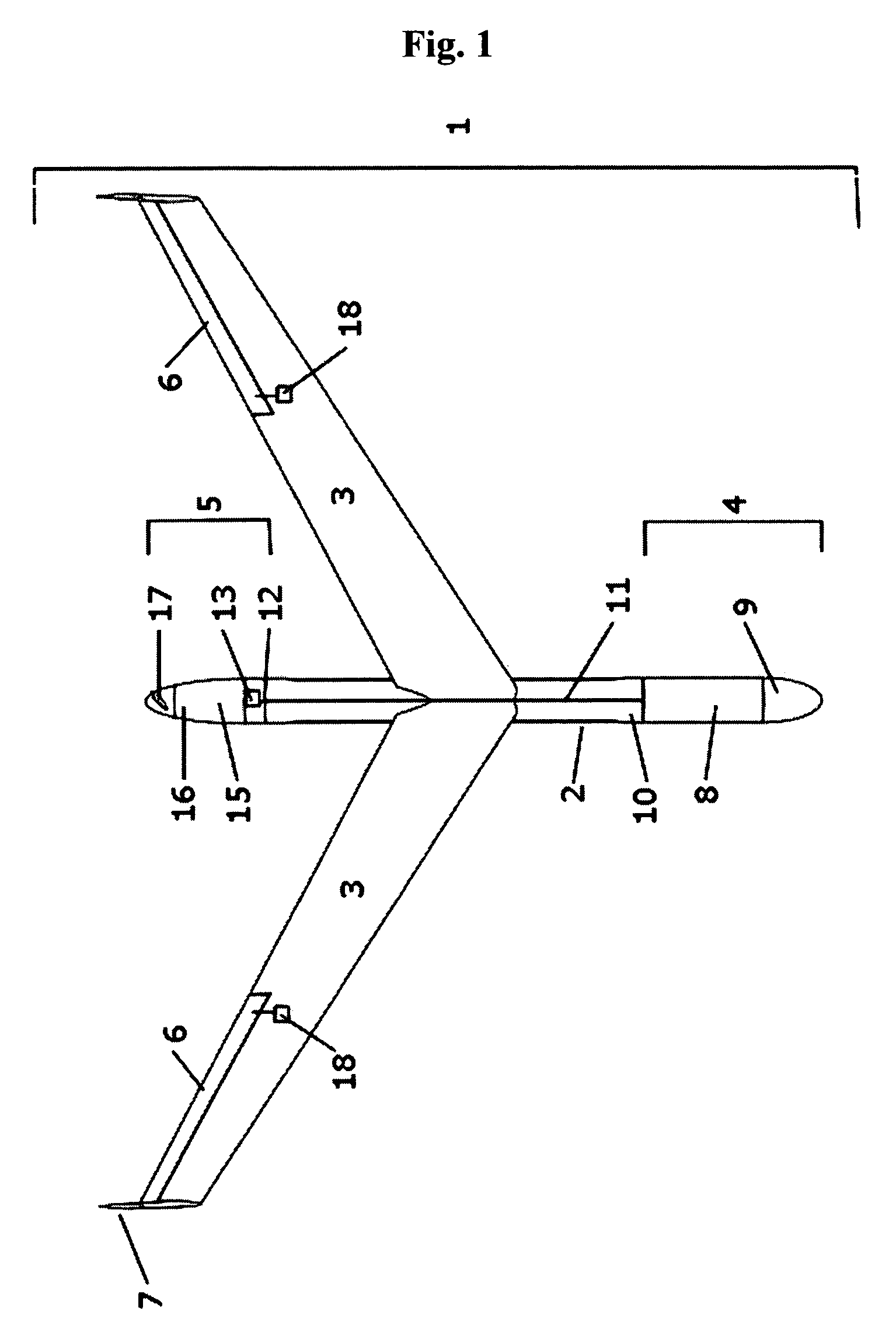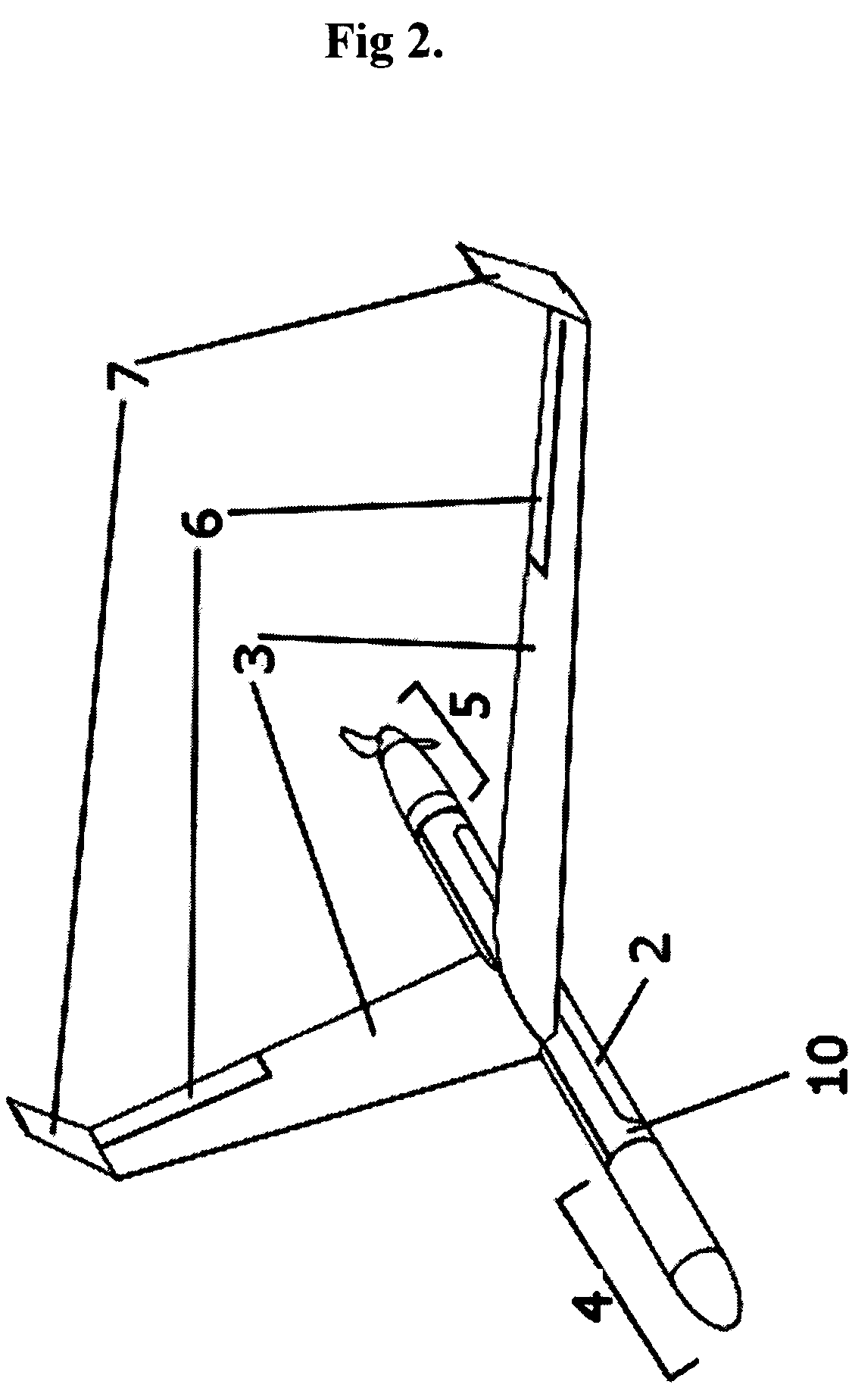Expendable sonobuoy flight kit with aerodynamically assisted sonobuoy separation
a sonobuoy and flight kit technology, applied in the field of deployment of sonobuoys, can solve the problems of still remains a risk to flight crews, and large complex and expensive vehicles (the cruise missiles), and achieve the effect of inexpensively augmenting the coverage of existing aircra
- Summary
- Abstract
- Description
- Claims
- Application Information
AI Technical Summary
Benefits of technology
Problems solved by technology
Method used
Image
Examples
Embodiment Construction
[0018]With reference to the drawings, the preferred embodiment of the invention (1) contains a standard Naval A-size sonobuoy (2) being the primary structural member onto which is attached the wings (3), a module forward of the sonobuoy (4) and a module aft of the sonobuoy (5). The wings (3) provide the requisite lift and through sweepback and twist also afford static stability in the usual manner for tailless designs. The invention need not be tailless but could be any aircraft configuration without violating the spirit of the invention, including a conventional tail aft design, canard design, tandem wing or joined wing design as it is not the configuration of the aerodynamic surfaces which sets this invention apart. The tailless design, however, is used as the preferred embodiment for the rest of this description. The flight control surfaces are of the standard type. While a full suite of pitch, yaw and roll controls may be used, a minimum configuration is desirable to reduce cost...
PUM
 Login to View More
Login to View More Abstract
Description
Claims
Application Information
 Login to View More
Login to View More - R&D
- Intellectual Property
- Life Sciences
- Materials
- Tech Scout
- Unparalleled Data Quality
- Higher Quality Content
- 60% Fewer Hallucinations
Browse by: Latest US Patents, China's latest patents, Technical Efficacy Thesaurus, Application Domain, Technology Topic, Popular Technical Reports.
© 2025 PatSnap. All rights reserved.Legal|Privacy policy|Modern Slavery Act Transparency Statement|Sitemap|About US| Contact US: help@patsnap.com



